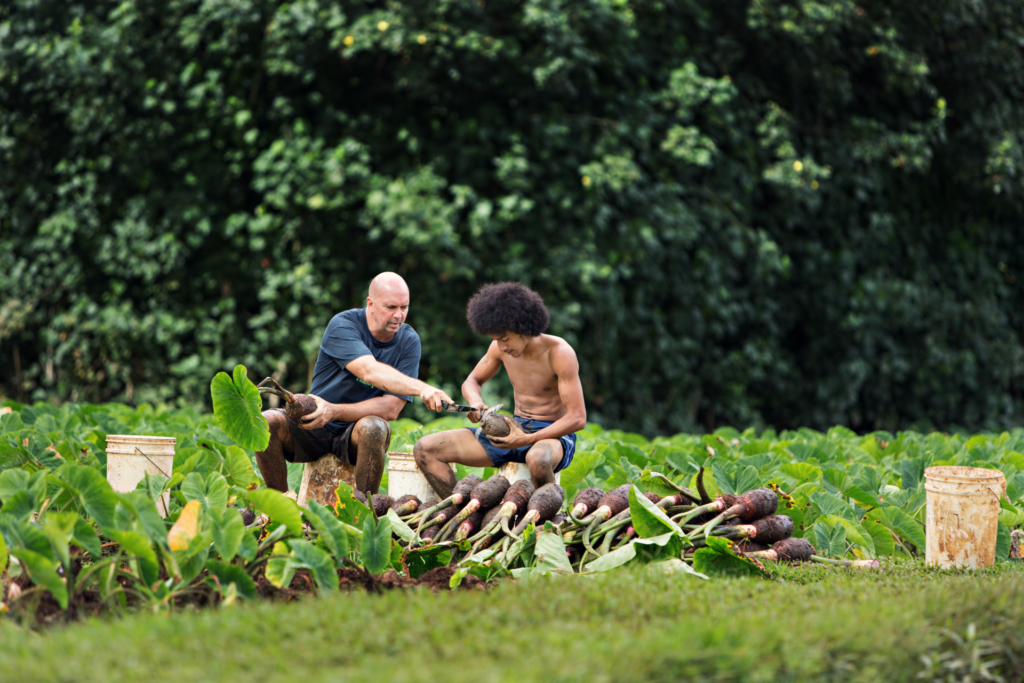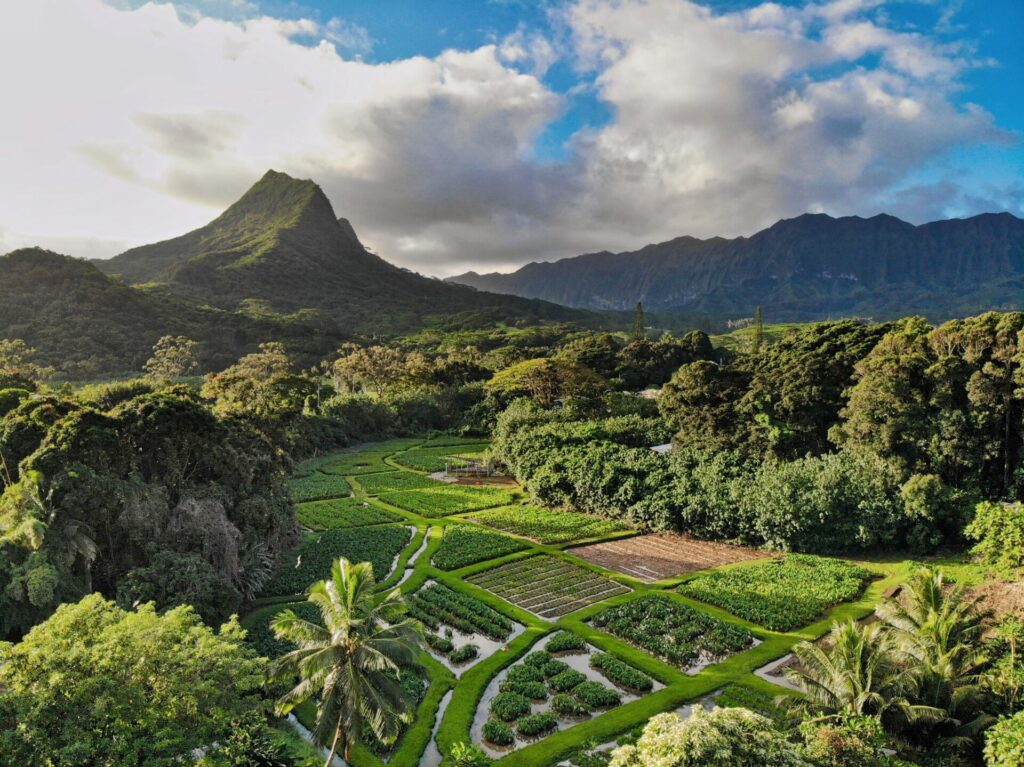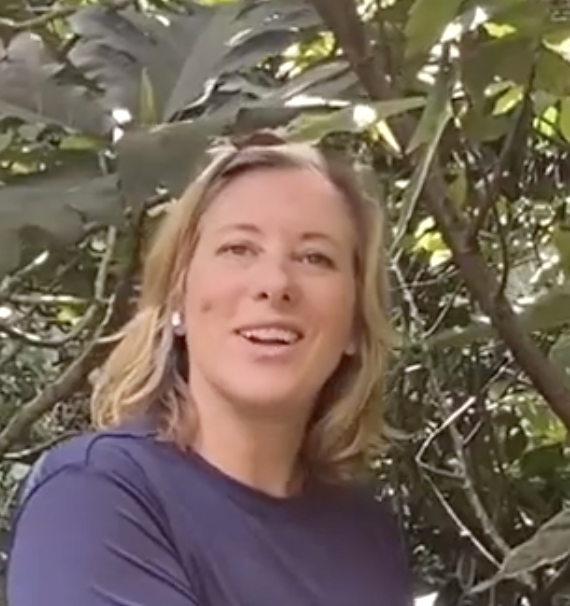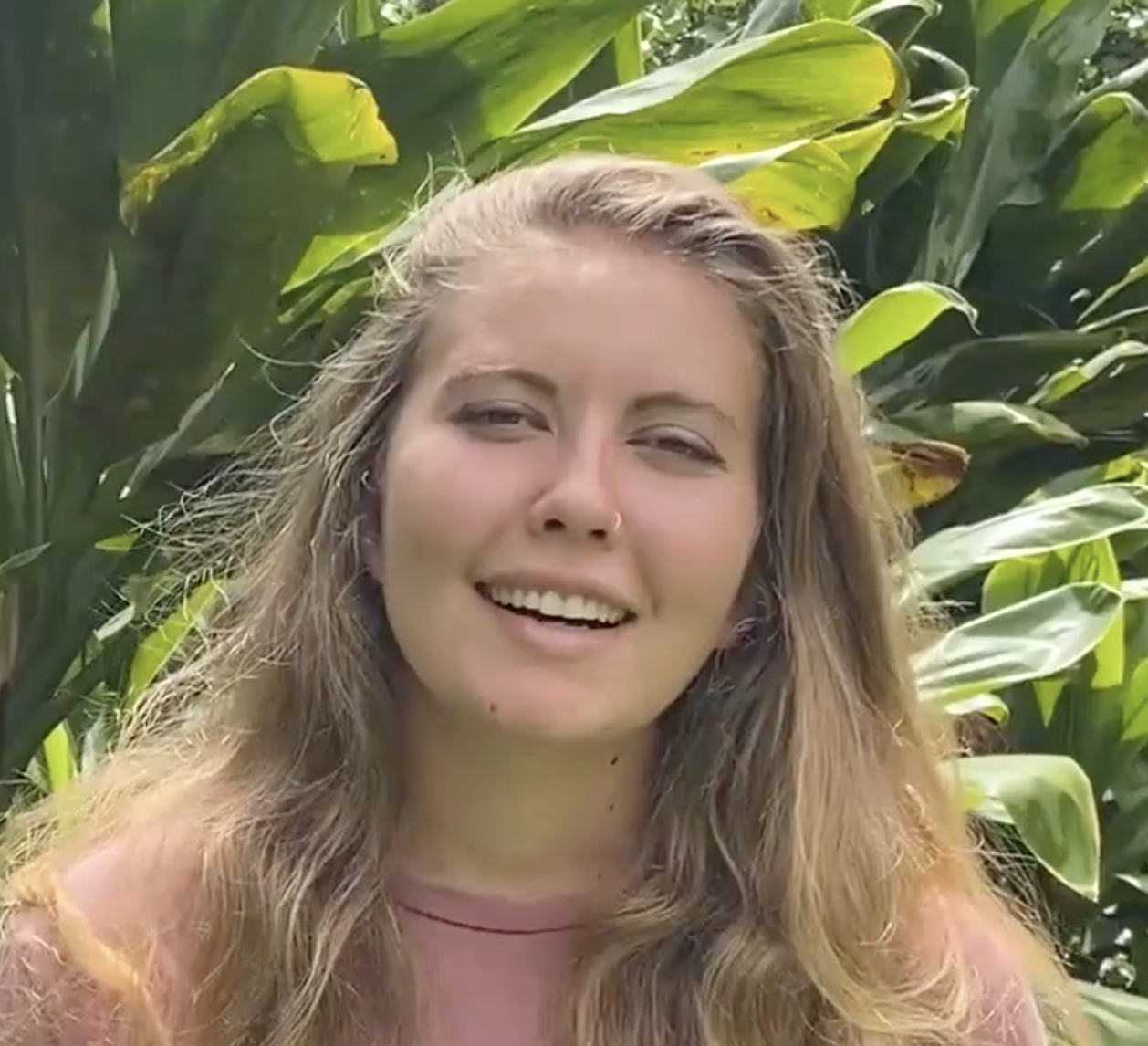We began to ask ourselves: How much more profound and impactful could this experience be if it were beyond school?
Michele Wilhelm, Ho`okua`?ina
Q: What led your family to create Ho`okua`?ina?
My husband, Dean, worked as an educator with the Hawaii Youth Correctional Facility. He’s Hawaiian, and most of the young people in the facility are Hawaiian.
These young people have so many gut-wrenching origin stories; grandparents raising their families, homelessness, substance abuse. They were given a certain challenging set of circumstances and were accustomed to being told—and believing—that they had no worth and no hope for their future.
Shortly into his time there, Dean began growing a tiny strip of Kalo outside his classroom at the facility to cook laulau with learners. He loves to cook. He quickly discovered a lot of the kids had not grown or cooked their own food, and he saw how it gave them a sense of pride to create something themselves from the land. My husband didn’t know at the time what made that experience so profound for them, but he realized there was something there and began using Kalo as a way to teach.
The biggest shifts were in his English class. Dean and his learners used Kalo to connect with Hawai`i and Hawaiian culture. In addition to growing and cooking, they often communicated through music, poetry, singing, and rap—sometimes in Hawaiian, sometimes in English.
The kids’ walls (those built up because of their lived experiences and the assumptions the world put on them) began coming down. In their place, they were building up relationships and trust. There was mutual respect. Learners, sometimes for the first time, discovered fun, joy, and relevance in their learning. It was transformative and revolutionary seeing it start with a strip of Kalo.
My husband and I began dreaming about creating gathering spaces where young people and their families could be together while getting their hands in the dirt and making the community stronger.
We began to ask ourselves: How much more profound and impactful could this experience be if it were beyond school? What if we brought together children, grandparents, families, healthy mentors? What if we hosted gatherings to grow and prepare food together?
What if everyone had an opportunity to contribute to their community? What if learners we engaged with, many who haven’t had healthy relationships, got to see healthy interactions between a husband and wife? Mother and child? Father and child? Peers and peers? What if this tiny strip of garden was bigger?
Soon after, we sold our house and began placing bids for farm land. Dean eventually left the education department to work full-time for our organization, Ho`okua`?ina.
Q. Your family started this work inside the education system and transitioned out. Can you say more about your drive to take that leap?
Our whole mission is that when people arrive, it doesn’t matter whether they’re a child or an elder, they leave understanding that their lives have value, meaning, and purpose. It’s for everyone to get connected and to get a glimpse into the future. It’s to recognize themselves as essential family and community contributors.
And, the learning and well-being of learners with unstable backgrounds have always been our main priority—to support them to develop positive feelings about themselves, recognize their own worth, be able to healthily express themselves, and have the chance to contribute to their community. Because of this, relationships are at the center of everything. Relationships with Ke Akua (God), relationships with each other, and relationships with ‘?ina (land), which come with all the values of Hawaiian culture.
My husband attempted many things to make that possible inside the system. We were confident we could provide something so much more impactful through a teen mentorship program outside the system, where there is more freedom.
We believe our drive was divinely inspired. When we started, we had no business or farming experience. I did not know how to write grants or ask for funding. What compelled us to divert our lives toward something we had no prior knowledge in? We just knew it had to happen. No one else was going to do it, and it had to be us. We didn’t know where else that clarity for us came from.
Relationships are at the center of everything. Relationships with each other, relationships with ‘?ina (land), and relationships with Hawaiian culture and values.
Makana Wilhelm, Ho`okua`?ina
Q: How has your programming expanded over the years?
We did eventually find funding. Rather, the Consuelo Foundation found us and aligned with our values and mission. That allowed us to offer stipends to learners in our mentorship programs. We also expanded our team to allow us to outreach and build relationships with our neighbors and capture and share the stories of their lives and learnings through digital storytelling.
More recently, we have begun engaging with public and public charter schools, a community college, and community organizations. The learning we support aligns with the Office of Hawaiian Education’s N? Hopena A?o standards.
Schools have never been our main focus, but we asked ourselves: What if the teens we work with now had these experiences and relationships from when they were five years old? We were convinced it would make a difference.
As we’ve expanded in this way, we’ve seen interesting things begin to happen. Educators have begun recognizing us as a resource. They reach out to us and want to know what we’ve been doing to support learners. They’re becoming interested in learning about our values and how we do things.
We also now see schools sending children to us one to four times a year. And, on average, we’ll see many of these children twelve times over the course of their elementary school experience. Many return on their own to volunteer with family members.

Take a Farm Tour — Get a glimpse of the daily life of the farm and the programming at Ho?okua??ina.
Q. Is there a story of a young person in your program that has really stuck with you?
We don’t believe this work can be time-bound, so the program shouldn’t be either. The very first learner in our mentorship program chose to stay for seven years. He had been homeless and arrived to us so quiet and shy.
Fast forward a few years later and he has transformed into an extreme extrovert. He engages with everyone. He’s now training to be an arborist. He expressed interest in that field while with us, and we were able to make connections for him to train and pursue that as a career.
Dean also trained him to be a mentor to new learners in the mentorship program. It’s something we’ve been doing with learners who are interested and who stay in our program for a while. My husband is a natural life coach, but it really is different seeing a mentor closer in age to these learners who, to varying degrees, better understand each other’s life circumstances. It’s also amazing to see the shift in who they’re being when transitioning from being a mentee to a mentor.
That boy who came to us seven years ago is unrecognizable today. It’s amazing to witness his growth and to see him transform. He’s happily married now, and we still regularly stay connected. That is real impact, right?
People, time and time again, come here and immediately feel safe and connected. I don’t know if it’s the land’s history, but this is a spiritual place. We create the culture here, but the culture sits on top of this land that found us.
Michele Wilhelm, Ho`okua`?ina
Q: What has surprised you most about this work?
There are two surprises that immediately come to mind. The first is that what started off as a vision, an idea, a dream, and us not knowing how to do it—it’s become a legacy, not just a one-off program. We are making an impact in the lives of learners and our communities.
Now, we are getting ready to buy another 100 acres of land. While our communities are still struggling in so many ways, we get to be contributors to them. And, through this work, others get to see ways they can contribute back to their communities. We grow and sell food together. We create together. We connect and build a stronger community.
Another surprise is the impact land has on people. You hear about building relationships all the time. But, here, we really emphasize relationships with people, land, and higher power. Relationships, really, are everything.
We can’t underscore the contributions of this land we’re on, even more than the program itself. When we were searching for where to build our farm, we immediately got chills stepping onto this land. We knew this was it. It was out of our price range, there was lots of red tape, and it took years of back-and-forth until this land could be opened up to host the programs at Ho`okua`?ina .
Us getting it eventually came down to the fact that no one in their right mind wanted to purchase this land because it was wetland, a jungle with no infrastructure. It couldn’t support the development of homes, roads, and high-rise buildings.
At the same time, we know this land is vibrant and rich. It was the breadbasket of the Ko`olau region. It’s where the Ali`i (Hawaiian royalty) declared that the best kalo could be grown. There’s also a history of Chinese immigrants growing rice here when they first arrived because of the wetland environment.
People, time and time again, come here and immediately feel safe and connected. I don’t know if it’s the land’s history, but this is a spiritual place. We create the culture here, but the culture sits on top of this land that found us.


